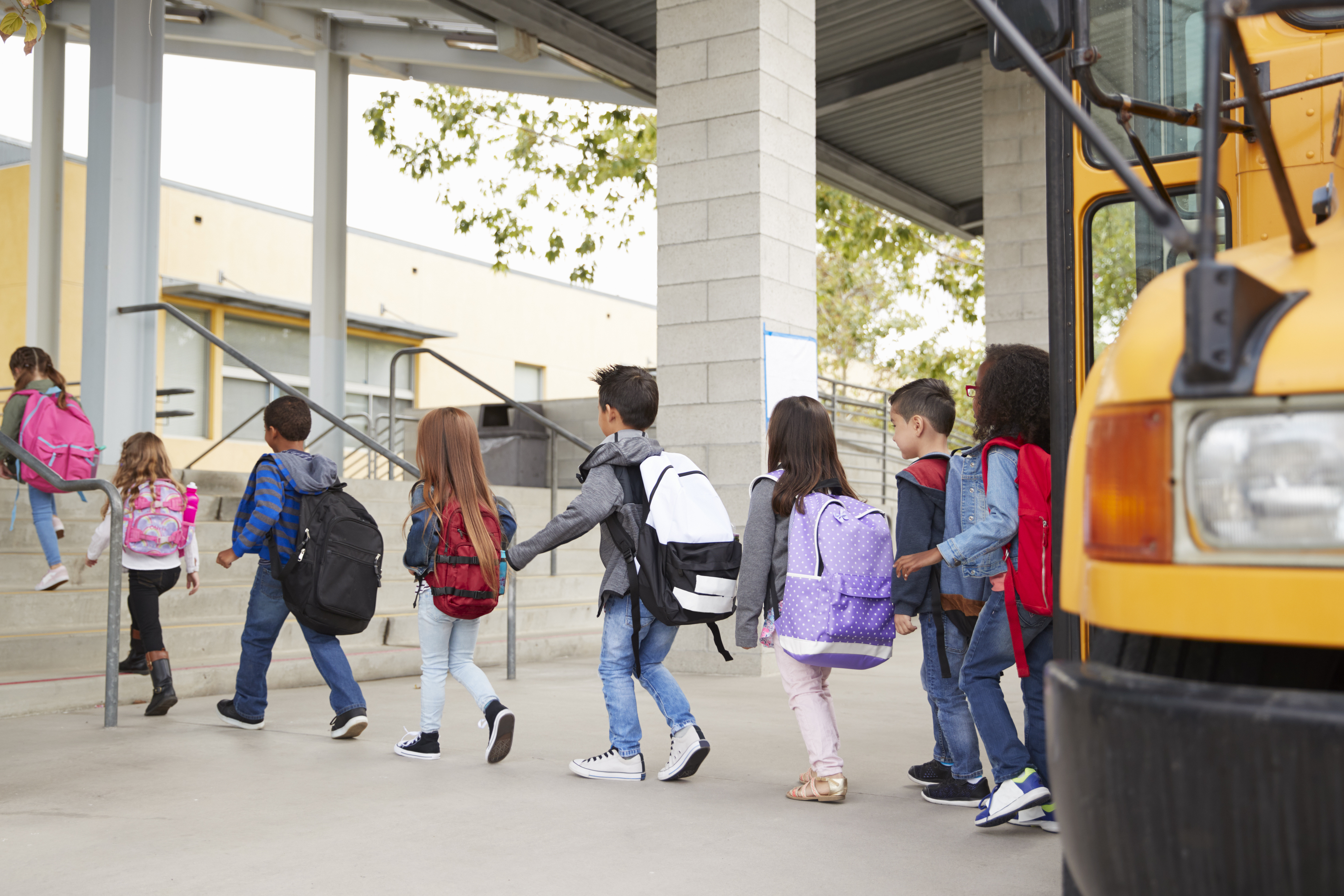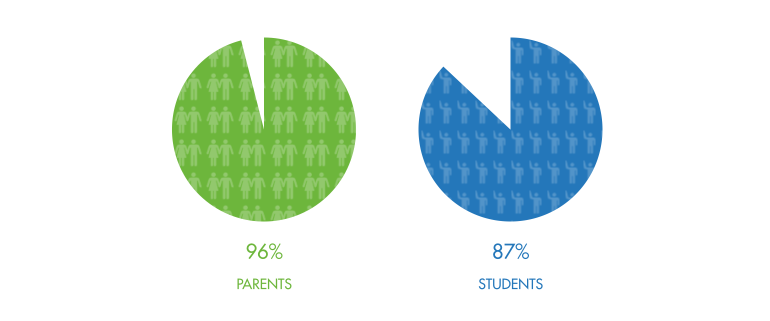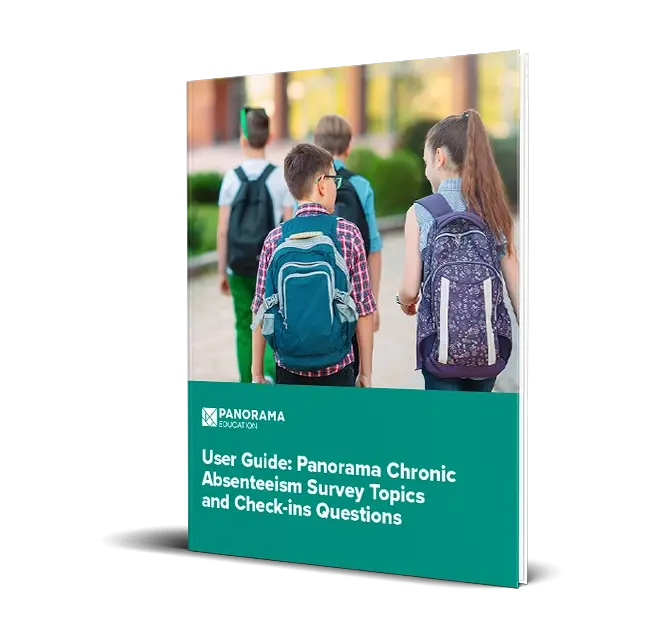Imagine walking into a building every day where you don’t feel safe—where bullying, threats, or even just a lack of support creates a constant undercurrent of fear. Now imagine doing that as a student, expected to learn and thrive. For too many students, this scenario is their reality, and it’s showing up in research as a significant contributor to chronic absenteeism.
School and district leaders know the challenge all too well. When students don’t feel safe, they don’t show up. Panorama’s recent State of Chronic Absenteeism Report highlights a growing trend: students with lower perceptions of school safety are significantly more likely to miss school, contributing to rising absenteeism rates.
But while the problem is stark, solutions are within reach. Districts can turn the tide by addressing the physical and emotional aspects of school safety. The key is understanding how students perceive their environment and taking intentional steps to create a culture of safety and belonging.
In this article, we’ll explore the link between school safety and chronic absenteeism. We'll also outline actionable strategies that district leaders can implement to improve perceptions of safety and, in turn, boost attendance.
The Link Between School Safety and Chronic Absenteeism
Chronic absenteeism—missing 10% or more of school days—has surged since the COVID-19 pandemic. Our data shows that annual rates nearly doubled from 2018-19 to 2023-24. One key factor driving this increase? Student perceptions of school safety.
To uncover strategies to address this critical issue, Panorama Education’s Data Science and Applied Research Team conducted an extensive study on the state of chronic absenteeism. Analyzing attendance data from over 7,000 schools and 11 million student records, they found that factors within a school’s locus of control—such as safety and engagement—can influence a student’s likelihood of being chronically absent by as much as 22%.
When they looked deeper, school safety emerged as one of the strongest predictors of absenteeism, especially in elementary and middle schools. Students who feel unsafe at school are significantly more likely to be absent. Specifically:
- Elementary school students with low school safety ratings are 1.5 times more likely to be chronically absent.
- Middle school students with low ratings for school safety and school climate are 1.8 times more likely to be chronically absent.
- High school students, while more affected by factors like valuing school and relationships with teachers, still show a strong correlation between absenteeism and low self-efficacy, which can tie to feeling safe emotionally in their school environment.
This data shows that addressing school safety—both physical and emotional—is critical for reducing chronic absenteeism. The good news? Understanding these patterns gives district leaders a powerful tool for driving change. By prioritizing school safety alongside other factors, like climate and student engagement, districts can make meaningful progress in improving attendance across all grade levels.
Understanding Absenteeism Through Survey Topics
Our study found the strongest correlation between school safety and attendance at the elementary and middle school levels.
In elementary schools, the questions most correlated to chronic absenteeism center on school safety, with the top four focused on this issue. Eight of the top ten questions relate to school safety and climate:

The top ten questions most linked to end-year chronic absenteeism rates in elementary school. In the full report, we provide an in-depth look at the top survey questions most linked to absenteeism by grade level.
In middle schools, this pattern decreases, with only six of the top ten questions related to these topics. Specifically, physical safety questions relate more to absences in elementary schools. In middle schools, questions about positive feelings toward school and trusting relationships with adults rose to the top.
If your district wants to understand the root causes of absenteeism, our research shows that some student survey topics are better than others. School and district leaders should consider administering different survey topics to elementary, middle, and high school students. Consider utilizing survey items that can help anticipate possible chronic absenteeism at the school and individual levels.
- For elementary students, we see strong evidence that school safety is a good indicator for possible chronic absenteeism issues.
- For middle school students, school safety continues to be an important indicator. However, other topics, such as self-efficacy and school engagement, also correlate strongly with chronic absenteeism.
- For high school students, topics such as student-teacher relationships, self-efficacy, and school climate relate deeply to chronic absenteeism.
Using Panorama Surveys to Address Chronic Absenteeism
Our analysis of chronic absenteeism showed that schools with lower survey scores in the fall tended to have higher absenteeism rates later in the school year. However, the factors that influenced absenteeism varied by grade level.
These insights suggest that it’s helpful for district and school leaders to measure key factors related to absenteeism early in the school year. To support this, we developed our Panorama Chronic Absenteeism Survey Topics and Check-Ins Questions.
Survey topics include:
- School Safety (em)
- School Climate (em)
- Self-management (eh)
- Challenging Feelings (e)
- Self-efficacy (emh)
- Social Awareness (mh)
- Positive Feelings (m)
- Emotion Regulation (h)
- Supportive Relationships (h)
*recommended for elementary school (e); middle school (m); high school (h)
Addressing Chronic Absenteeism Through School Safety Initiatives
Our research shows that the strongest link to chronic absenteeism in elementary schools is a low sense of school safety. For young students, concerns about physical safety are the main predictor of higher absenteeism rates. While school safety remains important in middle schools, the focus shifts from physical safety to adults providing safe spaces.
Different age groups require different strategies to enhance school safety. Here are key actions for improving school safety, with strategies for each grade level:
Train staff on cultivating safe environments with trauma-informed practices
- Provide professional development for all school staff on trauma-informed practices.
- Focus on the impact of trauma on learning and behavior, signs of trauma, and strategies to create a safe and supportive environment in all learning spaces.
- Techniques may include maintaining predictable routines, using calming strategies, and fostering strong, positive relationships with students.
Implement bullying prevention programs
- Activities like role-playing, storytelling, and interactive games can help younger students understand the impact of bullying and develop positive social skills.
- Encourage open communication between students and teachers to address any incidents promptly.
- Focus on conflict resolution and social perspective-taking with secondary students. Teach them to navigate disagreements constructively and understand different viewpoints through workshops, peer mediation, and discussion groups.
- Encourage older students to take an active role in promoting a culture of respect and inclusion within the school.
Create designated safe spaces within the school building
- Provide students with safe, calm spaces and coping tools.
- Provide calm corners in elementary schools and counseling centers or mindfulness rooms for older students.
Conduct frequent check-ins to understand student needs
- Understanding student needs through frequent check-ins helps create a safer and more responsive school environment, reducing anxiety and encouraging regular attendance.
- Administer check-in surveys daily or weekly using tools such as Panorama Check-Ins or more informal daily greetings and brief conversations with a teacher or school counselors.
Panorama's Chronic Absenteeism Survey Package
The Chronic Absenteeism Survey Package combines key topics from our Student Survey and new topics available in Check-Ins. We designed this bundle to help schools identify and address factors contributing to chronic absenteeism early in the school year.
Our analysis shows that schools with lower survey scores in areas like school safety and climate often experience higher absenteeism rates. Since these factors vary by grade level, we’ve tailored the survey topics for elementary, middle, and high school students.
The package emphasizes critical areas like school safety, which directly impacts student attendance. By assessing how safe students feel in their school environment, district leaders can better understand one of the key drivers of chronic absenteeism and take steps to improve it.
Additional topics, such as self-management and emotion regulation, help schools gain a well-rounded view of the factors affecting student attendance, ensuring timely and effective interventions. The survey package also includes attendance check-ins and post-absence pulse checks to support ongoing monitoring and intervention.
Additionally, Panorama's Chronic Absenteeism Questions for Families provide schools/districts with valuable information about attendance from students and families that can allow schools/districts to intervene before students' attendance is affected.
Next Steps for School and District Leaders
Chronic absenteeism is complex, but our research shows that improving student perceptions of school safety can be a game-changer. From elementary through high school, when students feel physically and emotionally safe, they are far more likely to attend school regularly. The connection between safety and attendance is especially strong in the earlier grades, but remains a key factor throughout students’ educational journeys.
District and school leaders have a powerful opportunity to address absenteeism by fostering a safe, supportive, and engaging environment for all students. With tools like Panorama’s Surveys to gain insights into student perceptions of safety, engagement, and relationships, districts can address the root causes of chronic absenteeism with targeted interventions.

Panorama's Student Survey (demo data displayed)
Reducing absenteeism won’t happen overnight. However, prioritizing school safety alongside other key factors can help districts make measurable strides toward ensuring every student is present, engaged, and ready to succeed.







